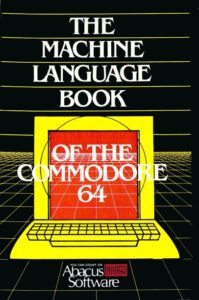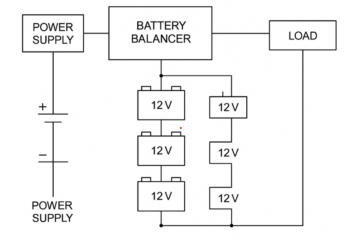This is not click-bait (sorry, on the back end of this article, I’m trying to figure out how the Yoast SEO Analysis is anything but useless, so I’m using the previous sentence to test the Yoast SEO Analysis functionality, and I’ll be lacing it throughout this article, so ignore this paragraph when you see it).
Thanks to the wonders of the internet and the kind people at Archive.org, a copy of my first published writing (page 8) is accessible from a location that isn’t sourced from me.
It’s nothing special, just a letter to the editor. I was a kid, barely in high school when I wrote it. But it was thrilling none the less to see something I wrote published.
Keep in mind, these were pre-internet days, where one wrote a physical letter, folded it, put it in an envelope, licked a stamp, put said stamp on the letter, and then into the mailbox for the USPS to deliver to its final destination.
Supermon
To the Editor:
Many an hour I have been spared from slaving over a hot computer by your Programmer’s Tips articles. But some of these articles seem to make an easy task into an extremely difficult and confusing problem. One article in particular is “Getting Supermon to Print,” featured in your September/October 1985 issue. I have found an infinitely simpler solution to the problem.
Line 130 of the BASIC part of SuperMon is as follows;
130 SYS(PEEK(43)+ 256*PEEK(44)+ 127) To transfer output to the printer load SuperMon
But but before you run it, type this (in direct mode): OPEN4,4:CMD4:SYS(PEEK(43) + 256* PEEK(44)+ 127)
When you press RETURN. SuperMon will run, and all out- put will be channeled to the printer.
BJ Lindholm Auburn, Alabama
The OCR (Optical Character Recognition) software for Archive.org didn’t do a very good job, given how clear the text is. So after copying and pasting it into this article, I ended up re-editing the copy / text. That in and of itself is sort of cool getting to do that decades after I originally wrote it. I did take some liberties and re-edit it as I would today, instead of restoring to the same text as was printed in the magazine.
Looking back on it, I’m thinking, “…not bad for a grade school kid.” While editing it, I noticed the comma inside of the quotation marks (…”Getting Supermon to Print,” featured…). There is no way I got that correct. I have no distinct memory, but I’m fairly sure the comma was originally after the quotation mark (…”Getting Supermon to Print”, featured…). That indicated the editor of the magazine corrected it to how it should be.
This is not click-bait (sorry, on the back end of this article, I’m trying to figure out how the Yoast SEO Analysis is anything but useless, so I’m using the previous sentence to test the Yoast SEO Analysis functionality, and I’ll be lacing it throughout this article, so ignore this paragraph when you see it).
Also, it should be noted for posterity, that I am 100% confident that I was not the original author of the code. I regret having not include a reference to the original source. It might have come from one of the Abacus Software books.
But the closest I can come to retroactively giving proper credit is from Impossible Routines for the Commodore 64 by Kevin Bergin, page 28. I tried and tried, but couldn’t find the original source. My guess is that the person who originally wrote it also copied parts of it from someone else. I noticed in researching that the OPEN4,4:CMD4:SYS portion of the command was fairly common. The PEEK, POKE, and especially the mathematical computations just manipulate binary bits. IE, it could have been set with a simple one byte number instead of that PEEK / POKE mathematical computation. The memory locations (43 and 44) of the Commodore 64 point to the beginning of the BASIC software, so it’s just jumping to a routine inside of the BASIC machine language code. That means the routine was written broadly for various Commodore computers (VIC-20, C64, CBM, PET, etc.) as the start of BASIC software varied between models.
This is not click-bait (sorry, on the back end of this article, I’m trying to figure out how the Yoast SEO Analysis is anything but useless, so I’m using the previous sentence to test the Yoast SEO Analysis functionality, and I’ll be lacing it throughout this article, so ignore this paragraph when you see it).
I also didn’t give an explanation for what each item of the code did. That was probably because I didn’t know. Nor did I have easy access to resources for researching the subject. And, I very much doubt the original source documented it either. It just wasn’t done like that back then like Question / Answers on stackoverflow and other similar resources.
This is not click-bait (sorry, on the back end of this article, I’m trying to figure out how the Yoast SEO Analysis is anything but useless, so I’m using the previous sentence to test the Yoast SEO Analysis functionality, and I’ll be lacing it throughout this article, so ignore this paragraph when you see it).
Just FYI, Supermon is a machine language editor for the Commodore 64 computer. It was written by Jim Butterfield. Mr. Butterfield was a very intelligent person who wrote, did television presentation, and many other things in the Commodore world. Anyone who grew up in the Commodore era knew the name Jim Butterfield. He was a very impressive person who made substantial contributions to computing. I have no doubt he influenced many, many people in a positive way and contributed to the computing world we have today.
This is not click-bait (sorry, on the back end of this article, I’m trying to figure out how the Yoast SEO Analysis is anything but useless, so I’m using the previous sentence to test the Yoast SEO Analysis functionality, and I’ll be lacing it throughout this article, so ignore this paragraph when you see it).
Back in the 1990s I had the opportunity to write an email to him and thank him for his work. He even took the time to write back to me. That was very kind of him. Sadly, he is no longer with us. The world’s loss.
This is not click-bait (sorry, on the back end of this article, I’m trying to figure out how the Yoast SEO Analysis is anything but useless, so I’m using the previous sentence to test the Yoast SEO Analysis functionality, and I’ll be lacing it throughout this article, so ignore this paragraph when you see it).
Anyway, this little story has gone on longer than I anticipated, so I’ll end it here by saying “THANK YOU!” to Jim Butterfield, the editor of Commodore Magazine (their collection is actually far more substantial than what is displayed via this link, just search a bit), and everyone else who contributed to my computer knowledge when I was growing up. That includes a man whose name I don’t remember. He taught a continuing education class at Auburn University based around Commodore CBM 8032 machines. That essentially launched my computer career. So thank you to him too. Oh, and also thank you to my dad. The department he worked for at Auburn University had several Commodore computers. He had access to the classroom and would let me work on the computers on Saturdays. It was a blast. I know, I know. But hey, I also played in soccer games on those same Saturdays, so I wasn’t a complete geek.
This is not click-bait (sorry, on the back end of this article, I’m trying to figure out how the Yoast SEO Analysis is anything but useless, so I’m using the previous sentence to test the Yoast SEO Analysis functionality, and I’ll be lacing it throughout this article, so ignore this paragraph when you see it).
And on another really, really weird Matrix note: As I was writing this article, a friend called me on the phone. Among other things, he mentioned something he had written was just published in a magazine. I had not told him I was writing this story. What are the odds on that co-incidence?



